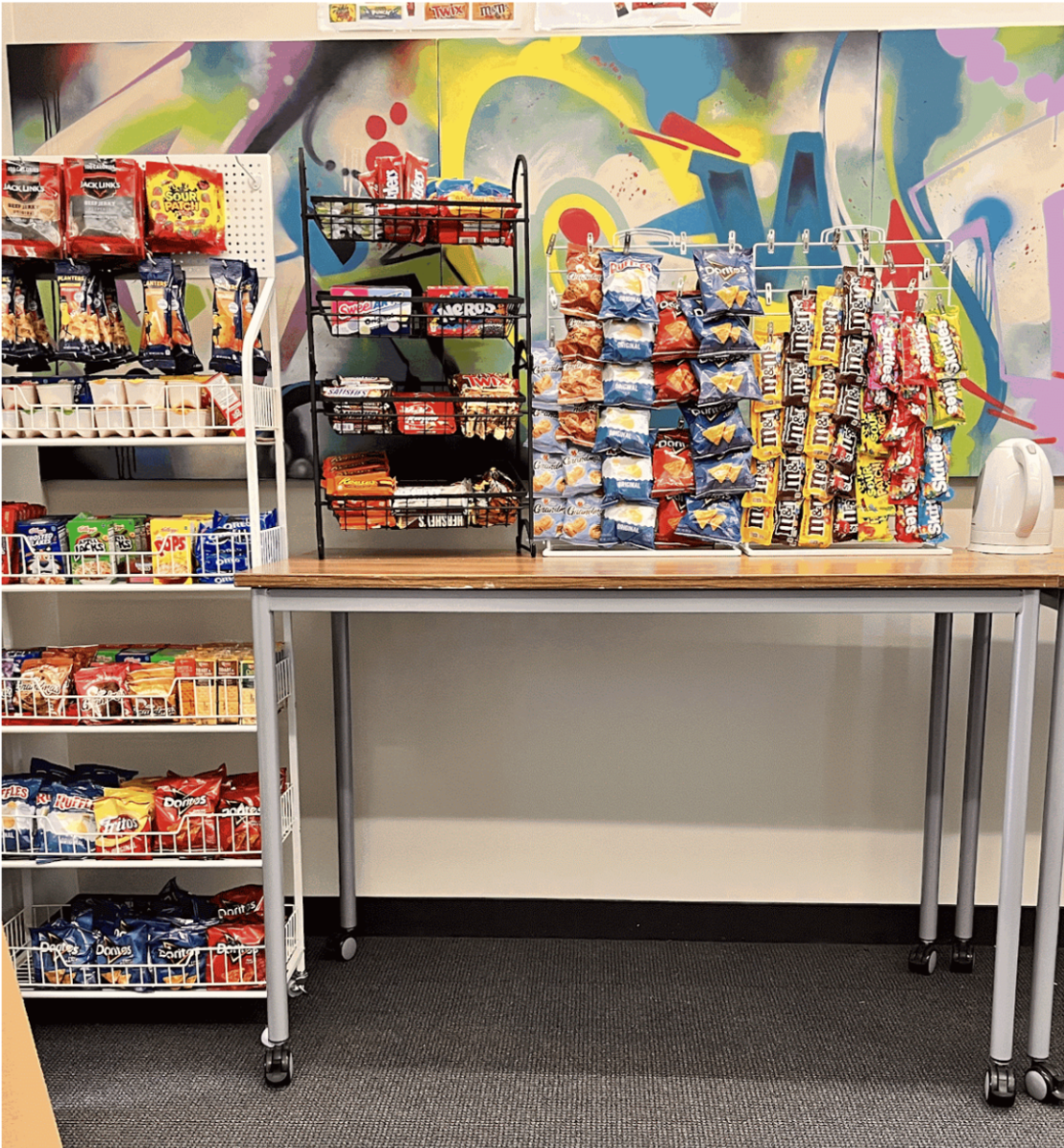Isabelle Pinard
Managing Editor
The school’s administration has decided to stick with four 80-minute classes each day on a rotating block schedule of red and blue days next year.
“We continue to see the benefit of the extended classroom experience and the students ability to focus on three or four classes of homework a day,” head of school Andrea Shurley said.
The longer class times, instituted last year, offer students a chance to engage in the class by asking more questions or getting help from their teachers, according to Shurley.
“I had block periods at my old school,” sophomore Jessica Childs said. “The classes are longer and the reduction of classes a day gives me fewer classes to prepare for, and fewer books to lug around.”
The alternating blue and red days allow students to maintain a schedule because homework for each class is usually due every other day, allowing students to keep track of homework and projects.
“At first the schedule was a little tough to get used to because I wasn’t use to having a block schedule and alternating homework days, but block periods are reasonable and helpful,” freshman Ashley Osorio said. “I can organize homework and I have learned time management and scheduled my time for projects or essays which take longer than one day.”
Up until last fall the schedule had all classes taught in 40-minute periods on Monday with block schedules on Tuesday through Friday.
Seniors remember this old schedule and agree the block periods are more relaxing and helpful for schoolwork than the 40-minute periods.
“These block periods give you less homework than the days when we had all classes on one day. I think with these 80 minutes students can accomplish so much more,” senior Quinn Reno said. “The amount of time gained by having a block schedule really helps both students and teachers.”
The schedule offers more time for students to communicate with teachers and gives each student a chance to concentrate on her studies in chunks according to librarian Cynthia Velante, who sees students use the library during their free periods of the block schedule.
“It’s excellent, this schedule, because it really helps my girls,” Velante said. “I’ve been at this school for 11 years and I’ve seen a lot of schedules, but the block is the best.”
Teachers also benefit from this schedule with more useable and instructional time each day, but some teachers, find the block periods strain their student’s time.
“The block periods are a sound system schools use, but for language courses it limits the amount of exposure to the language students receive, and limits the amount of practice they should be given as language learners,” French teacher Clemence Richard said.
Having a block period is good, but it presents challenges.
“Block scheduling works for some classes, but not for others,” history teacher Michael Stafford said. “Most of the time teachers only see their students two times a week, which means students who are absent or leave early for sports are missing 80 of the 160 minutes we get a week.”
Block periods are used in most college curriculums. Elisa Asdourian, who attends Pitzer College (’10), says Convent prepared her well for her college class schedules.
“I remember when we had all classes on Mondays, and then decided to change to block periods,” Asadourian said. “I am glad they changed to block periods because it gave me more of a chance to focus on one or more classes a day, which prepared me for college because in college there is usually one class twice a week, or a seminar once a week. ”
The similarity of how classes were spaced out in Pitzer helped Asadourian get adjusted to her college curriculum and stay on top of her courses as well as give her time to enjoy college life.
“The concern will always be the student experience, so the conversation on how the student days are structured will be ongoing with faculty and administrators,” Shurley said.








